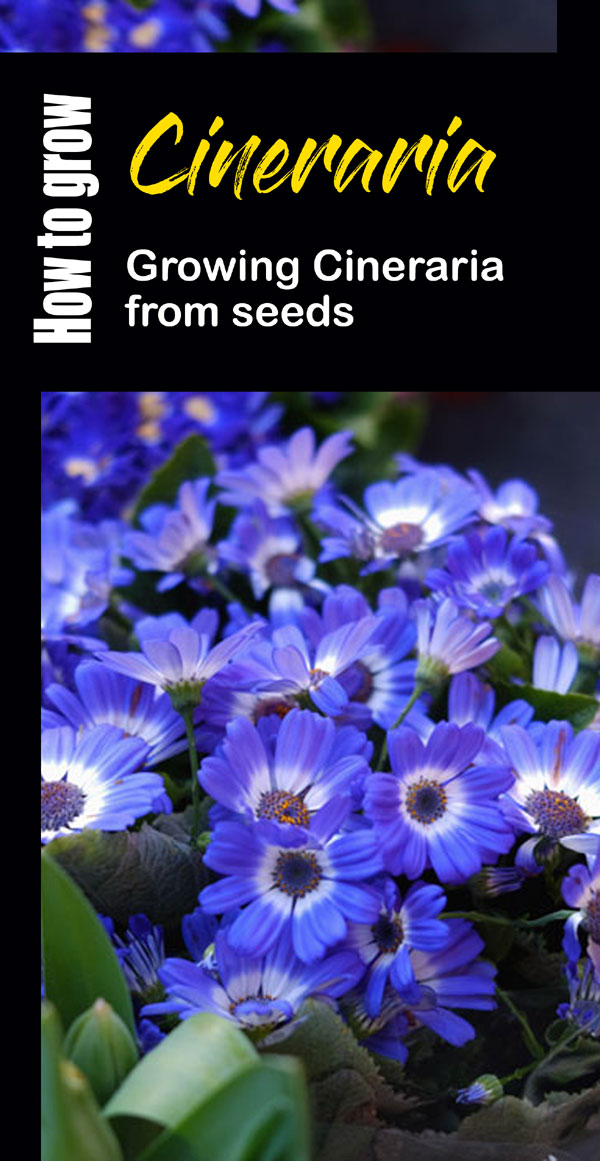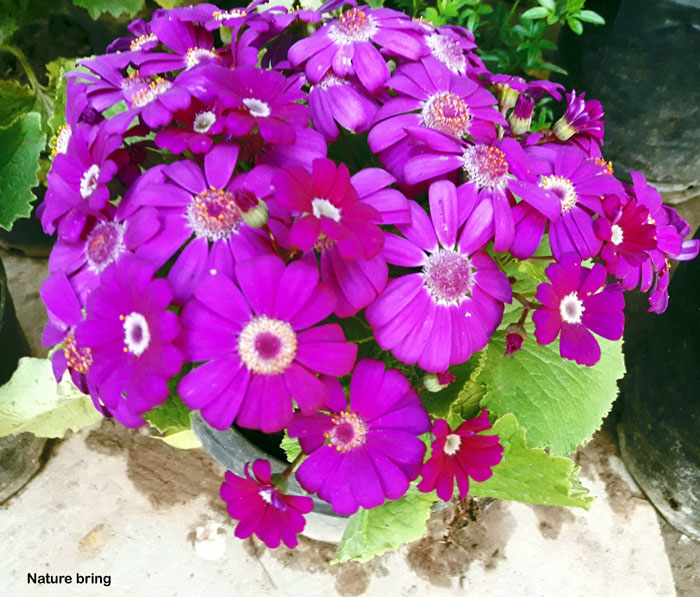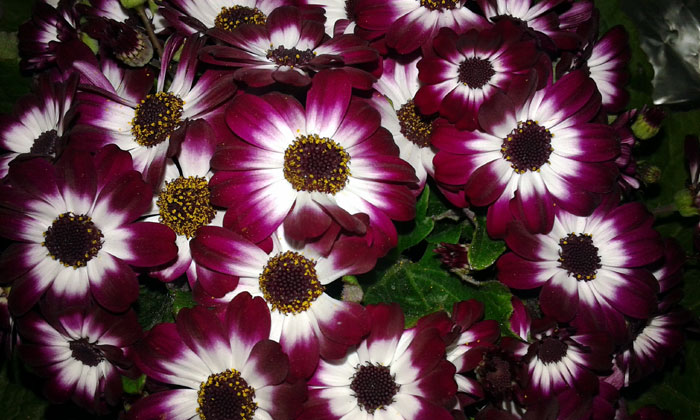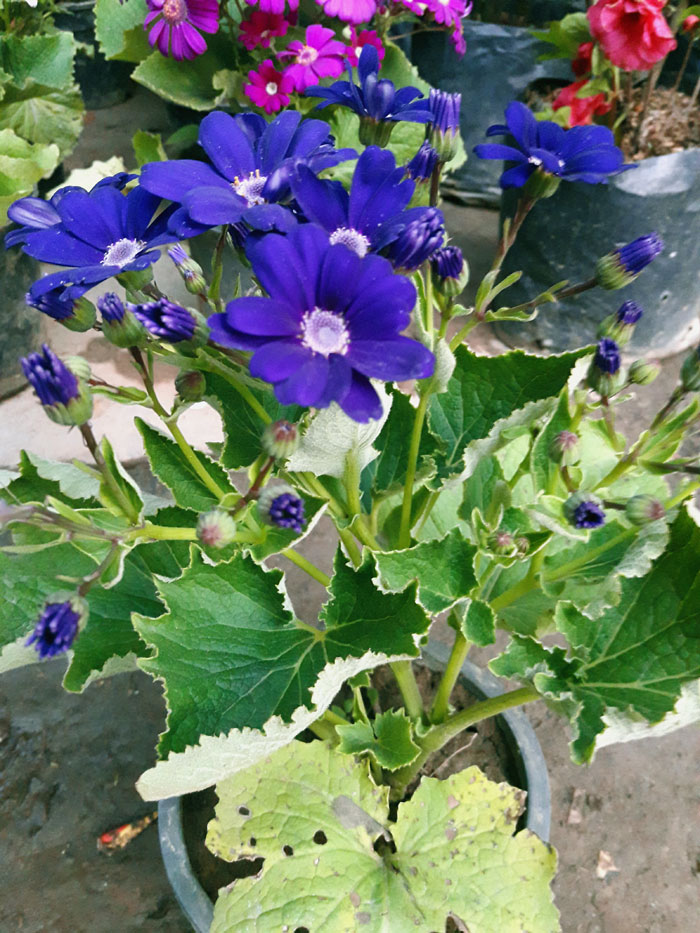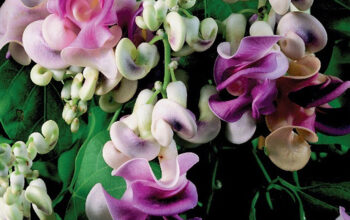Cineraria flower plants
Cineraria is the attractive flowering plant of ornamental horticulture, it spreads the magic of its colors in winter and spring gardens. It is a genus of the family Asteraceae or Compositae. Cineraria flower plants are tender perennial plants and hardy in the USDA area 9-11. These daisy-like flowers are about 3 “-5” in diameter, appearing in spring and summer. They are planted in the fall in cold areas where they begin to bloom in late winter. Learn Growing Cineraria, How to grow Cineraria from seeds, cineraria plants care, and pests problems.
Overview of cineraria flower plant
Scientific name Pericallis hybrida
Common name Cineraria, Florist’s Cineraria
Plant type flower plant
Sun required Full Sun to partial shade
Flower colors Blue, Purple, Magenta, Pink, White, and other shades
Blooming time spring and summer
Soil Well-drained, Sandy, Loam
Soil pH 6.1 -7.8
Zone 4- 9
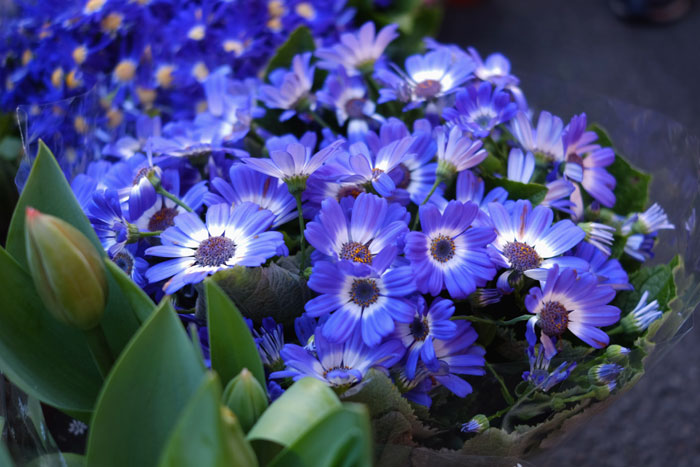
How to grow Cineraria
Soil and location
Cineraria flower plants prefer good drainage soil. For this, the soil is fertile, and slightly alkaline or neutral soil is good. Use a lot of peat moss in potting soil for improvement.
These plants require bright and indirect light, thrive well in cool temperatures. If you want to plant this indoor, then the north or east window is the appropriate place. The light from the south or west windows is scorching, due to which the flowers on the plant wither quickly.
Propagation
Pericallis hybrida is the preferred plant, its seeds have good germination capacity, so most gardeners propagate it by seeds. Its seeds are also easily found in seed shops. It is usually developed as an annual plant, and the plant is allowed to die after flowering. Some gardeners propagated this by cutting plants, this method is easy. Roots develop quickly by cutting the plants, but the plants do not grow well nor flower healthily. Summer is the best time to propagate through cutting.
Watering
Cineraria plants prefer moist soil, but excessive moisture can cause damage to the plant. These plants need water every day in summer. Watering regularly is best for this plant, but allow the soil to partially dry before re-watering.
Fertilizer
Good quality organic manure should be mixed with soil before sowing cineraria seeds. I use well-rotted dung compost for my plants. Sometimes you can feed slow-release fertilizer or granulated 10-10-10 balanced fertilizers in 3-4 months to produce good flowers. This gives full nitrogen to its leaves and phosphorus and potassium to the flowers and roots.
Humidity and temperature
At least 40% relative humidity is good for this plant. You set your pot on a humidity tray, or you can use a room humidifier to increase humidity. These plants do best daytime temperatures between 15 and 18 ° C, nighttime temperatures range from 7 to 13 ° C, however it can tolerate a low temperature of 4 ° C. The color of its leaves fades due to high temperature and bright light.
Growing Cineraria plants from seeds
- You can easily grow cineraria plants in areas with the cool climate in your gardens. It is a trendy plant, so its seeds are easily found in shops or nurseries. Its seeds have good germination capacity.
- After a sprout, you can begin sowing of Cineraria in March – April.
- For this, add sand to the potting mixture and fill it in a container, there is no need to bury its seeds in the ground. You should put it on the soil surface and cover it with light soil and spray water. Now cover the pot with a plastic sheet.
- Its seeds germinate in about 8–10 days, as soon as germination appears, you can move the container to a light spot.
- When you see 2 true leaves in your plant, so you should transplant it in a separate container. The seedling should be transplanted together with the soil.
- When Cineraria plants grow well and become strong, you can transfer them to your desired location or large container.
Cineraria plants care
- Keep watering the cineraria plant and keep it moist during the growing season.
- Protect plants from frost by providing shade with a green cloth during cold days, and remove them when daytime temperatures are warm.
- To make the plant play longer, pinch the withered flowers.
- If you plant cineraria inside the house, keep it in filtered sunlight or bright light.
- Do not allow the soil of the plants in the pot to dry, and also be careful of the excess of water, the Cineraria remain happy, and bloom for a long time.
Pests and diseases
Occasionally pests and diseases are attacks in ornamental-deciduous cineraria, such as rust, powdery mildew, spider mites, and aphids. This plant is covered with thick hair, so better preventive measures should be found than curing the disease. You should plant species resistant to diseases and pests of cineraria. Use insecticides to control insects, if the plant is more affected.
If the leaves of your plant leaves appear yellow and below, then the sunlight is getting more on it, immediately transfer it to a new place. If the entire plant is withering then the humidity in the plant is very high, try to reduce the moisture.
Read also: Anthurium plant Growing indoors. Calendula growing guide. 11 Best winter flowers for your garden. Hellebore growing and caring tips. Begonia Houseplant growing guide. Why Tomatoes are not ripening. Self-seeding plants maintain your garden beauty. Primrose flower growing guide. Gerbera daisy growing and caring guide. Irises a growing and caring tips. Growing and caring Ixora plants. Eggplant growing and care tips. Ginger growing and care tips. Salvias growing, care, and propagation.
Happy Gardening
For pin:
